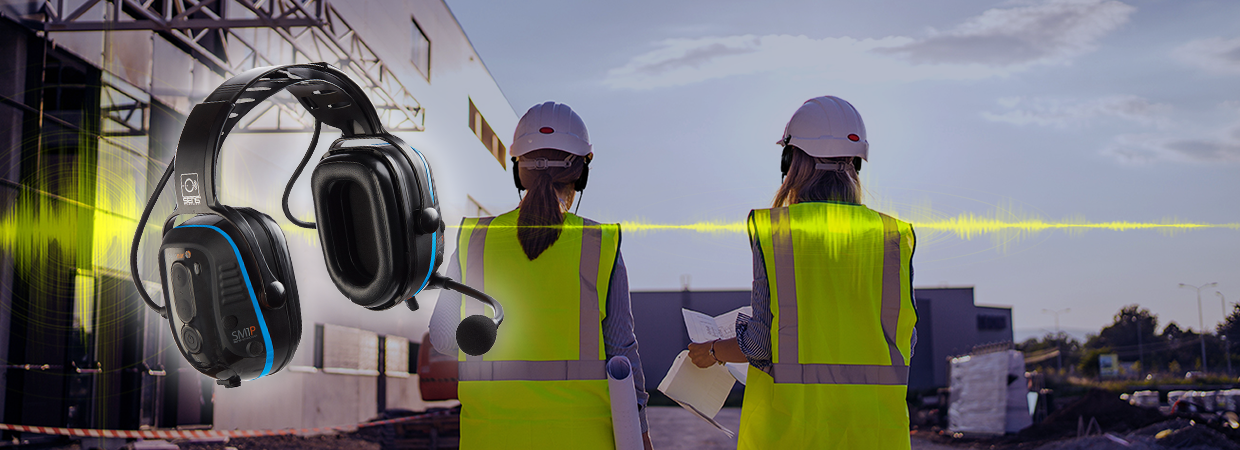- Home
- Blog
- High-Noise Workplace Safety
- How Noise on the Jobsite Can Affect Costs

How Noise on the Jobsite Can Affect Costs
Project managers on construction and manufacturing job sites face a number of challenges. They are under constant pressure to meet timetables, prevent cost overruns and avoid hazards and liabilities. They are often too concerned about these issues to worry much about noise. Unfortunately, high levels of noise on a job site can be very costly. Project managers must understand the risks and take appropriate precautions.
Fortunately, taking certain precautions can minimize these costs. Noise-canceling earplugs and other forms of ear protection can protect your employees.
Understanding the Costs of Noise on the Job Site
High decibel noise on a job site can create a number of problems. The biggest problem is that excessive noise can damage the hearing of your employees. According to the study Hearing Loss Among Construction Workers: Updated Analyses, 58% of older construction workers suffer from significant hearing loss. Their hearing loss was often a result of not taking appropriate precautions while working on noisy job sites.
Estimates of the exact cost of hearing loss remain elusive. However, it is clear that noise drives worker compensation costs up. A study by Work Care found that employers pay $242 million a year in worker compensation for hearing loss. The study further showed that these costs were higher in construction than in any other industry.
Workers' compensation claims are probably the biggest cost of noise on the job site. However, high decibel noise causes other costly problems as well. Another issue is that workers have trouble communicating on noisy job sites. Problems associated with this include:
- The risk of injuries is higher when workers can’t warn each other about hazards
- Productivity can decline if they can’t work as efficiently due to poor communication
- Materials might be wasted if project managers can’t communicate specifications due to high noise levels
These problems can create a dilemma for companies employing people that work at noisy job sites. They might be forced to work at lower profit margins or even a loss. If that isn’t an option, they might have to quote higher costs for their customers.
Construction and manufacturing companies must recognize these costs. They should take all reasonable noise reduction measures.
How Much Should Noise be Reduced?
Many employees don’t realize that the noise levels on their job sites are dangerous. They may think that the current dB levels they are exposed to don’t pose a risk. Unfortunately, many employees are exposed to very dangerous noise levels without even realizing it. An estimated 750,000 construction workers are exposed to dangerous noise levels every day, which threaten their hearing and increase the risk of hazards.
The United States Occupational Safety and Health Administration (OSHA) says that people shouldn’t be exposed to average daily noise levels exceeding 85dB. However, some construction tools produce over 110dB. Construction workers using these tools are exceeding their daily limits by 29% or more. Front-line employees in manufacturing facilities are facing similar risks. They are increasing their risk of hearing loss substantially if they use these tools frequently.
Despite the growing risks, many construction workers don’t have adequate hearing protection. The same problem exists in many manufacturing settings. Employers that want to avoid unnecessary worker compensation claims and other costs must take better precautions.
What are the Best Solutions to Deal with the Costs of Noisy Job Sites?
Construction and manufacturing companies can take a number of precautions to minimize the cost of high noise exposure, such as encouraging employees to wear better ear protection. Safety earmuffs have been available for years. However, more advanced noise reduction products are available today.
Noise-canceling earplugs and noise-canceling headsets or noise suppression headsets are proven to significantly reduce noise exposure. Employees will be much safer wearing them around high decibel tools.







